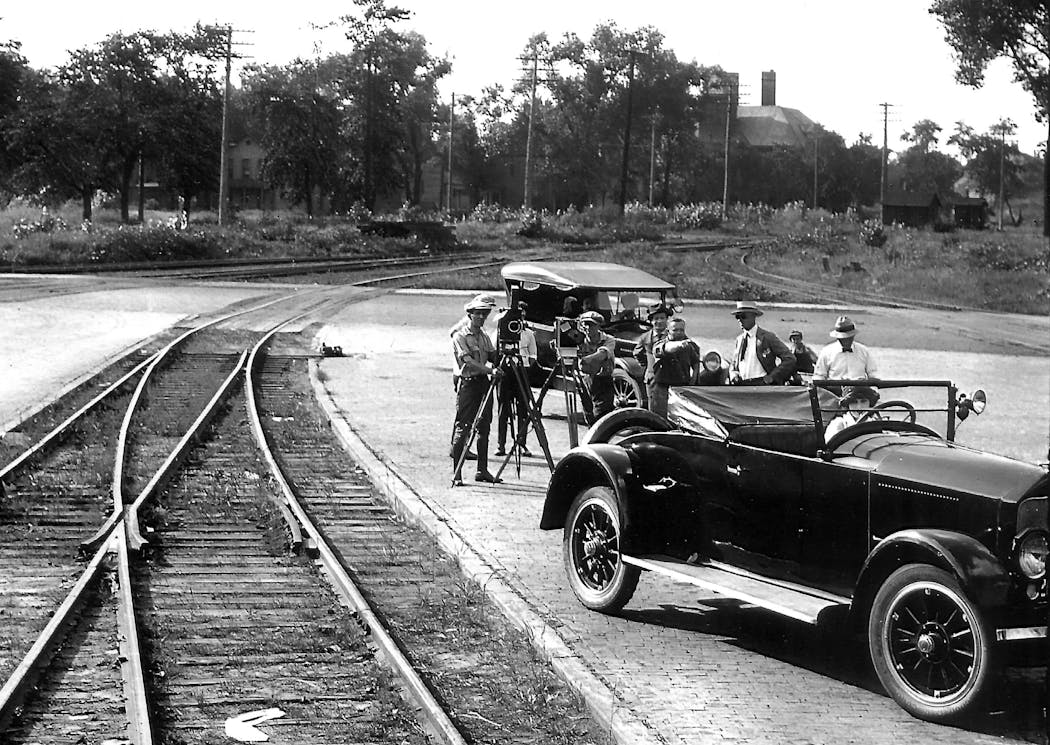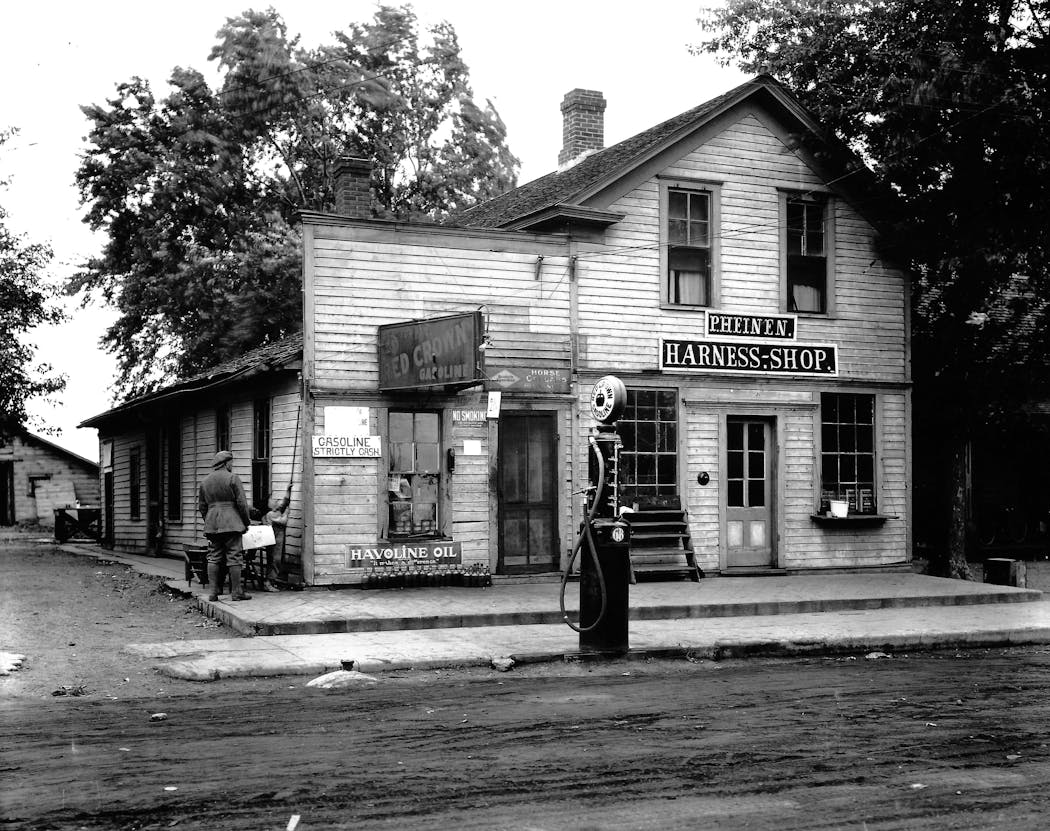What was the first movie filmed in Minnesota?
Listen and subscribe to our podcast: Via Apple Podcasts | Spotify | Stitcher
It is possible that no living person has seen the silent film "Free Air," but Gerald Mattson has developed a vivid version of it in his brain.
The local historian has spent years researching the 1922 film, which is believed to be the first feature-length movie made in Minnesota. It is also the answer to this week's question for Curious Minnesota, a community reporting project fueled by great reader questions.
Todd Racek inquired about Minnesota's entrance on the silver screen during a Curious Minnesota event at the State Fair. Fairgoers later voted it among their favorite questions of the day.
Described in the Minneapolis Tribune as a "breezy little story of a cross-country motor trip," "Free Air" was an adaptation of a novel of the same name by famed Minnesota native Sinclair Lewis. Unfortunately, it has been officially declared "lost" by the Library of Congress — meaning no known copies exist.
A portion of the film was shot in Rosemount, which is partly what attracted the attention of Mattson, president of the Rosemount Area Historical Society.
"Everything in the town shut down when they were shooting. The farmers all came to watch what was going on because it was a big deal," said Mattson, a retired airline mechanic.
A pro-capitalist agenda
"Free Air" was created by Bill Kahlert and Einar Berg, a pair of enterprising St. Paul natives who were students at Hamline University when they became interested in filmmaking as a kind of light propaganda. Specifically, they thought movies could be used to combat "Townleyism," a form of socialism that gained a foothold in Minnesota and North Dakota in the 1910s.
The pair founded Outlook Photoplays to produce shorts and features, including "Free Air," which was mostly filmed in Minnesota, with trips to North Dakota and Montana. Their plan? Use funds from heavyweights such as Swift & Company and Great Northern Railroad (they were pals with James J. Hill's son Louis) to tell stories that championed the virtues of Big Business.
"They made three full-length movies and ['Free Air'] was the only one that made money," said Mattson. "I was told by Berg's daughter, Karen Winship, that he always had a lot of affection for the film, which was moderately successful."
Exact numbers are hard to come by, but Mattson's research revealed that "Free Air" received nationwide distribution after its May 20, 1922, debut in St. Paul and New York City. Business records show that 70 copies of "Free Air" were printed, including 20 sent to South America for exhibition.
"I've always had my hopes that one of those South American copies would turn up," Mattson said.
From the St. Paul Hotel to Rosemount
By all accounts, "Free Air" succeeded because it went light on the Big Business stuff. A comedy/drama about a young man who ends up on a cross-country road trip in pursuit of the (wealthy) woman he loves, its theme is that hard work and determination make you a winner.
Mattson seems to have heeded that message.
His hard work resulted in the most complete record of "Free Air," even if it only exists in his head. In addition to meeting with Berg's daughter, who gave him copies of dozens of stills and on-set photos, he pored over Lewis' novel, newspaper archives and production notes.
He has also visited a number of the filming locations in Rosemount (renamed Schoenstrom in the film), St. Paul (the St. Paul Hotel was the production's local home base), Red Wing and elsewhere.
Mattson's travels took him to the Taylors Falls cliffs — which doubled as Montana's Glacier Park in the film. He even visited the Church of St. Peter Historic Cemetery in Mendota, using the visual clue of headstones to determine the exact spot where "Free Air" captured a scene.
Mattson, who has given presentations about the movie to historical societies and other interested groups, arranged his 70 or so photos in the order they would have appeared in the film so he could envision how they connected in "Free Air."
"I was 'watching' the movie, really. I tried to do it like I was sitting there in a theater, watching a movie, putting the scenes in order and using the [Sinclair Lewis] book to match them up," said Mattson.
He published the results in an extensive story that takes up nearly the entire 32-page November 2005 issue of "Over the Years," the magazine of the Dakota County Historical Society.
Although "Free Air" boasts no big stars, it did feature many Rosemount citizens and structures.
A building originally erected as a Temperance Hall, which had become a grain and feed business by the time of filming in 1921, was reconfigured as a general store. And a brick building became "Red Trail Garage," with the addition of a sign.
Like the film, those structures no longer exist. But Mattson — and other curious movie fans — can still hold out hope that, somewhere in Brazil or Argentina, there's a vault that contains a print of "Free Air," evidence of a time when Rosemount and its citizens were movie stars.
If you'd like to submit a Curious Minnesota question, fill out the form below:
Read more Curious Minnesota stories:
How did the North Loop in Minneapolis get its name?
What was the most destructive tornado in Minnesota history?
Did Ford make millions of windows from sand mined beneath its plant?
Why did Minneapolis tear down its biggest train station?
Was Minnesota once home to U.S. government-sponsored hemp farms?
Where does Twin Cities electricity come from and how is it delivered to homes?







